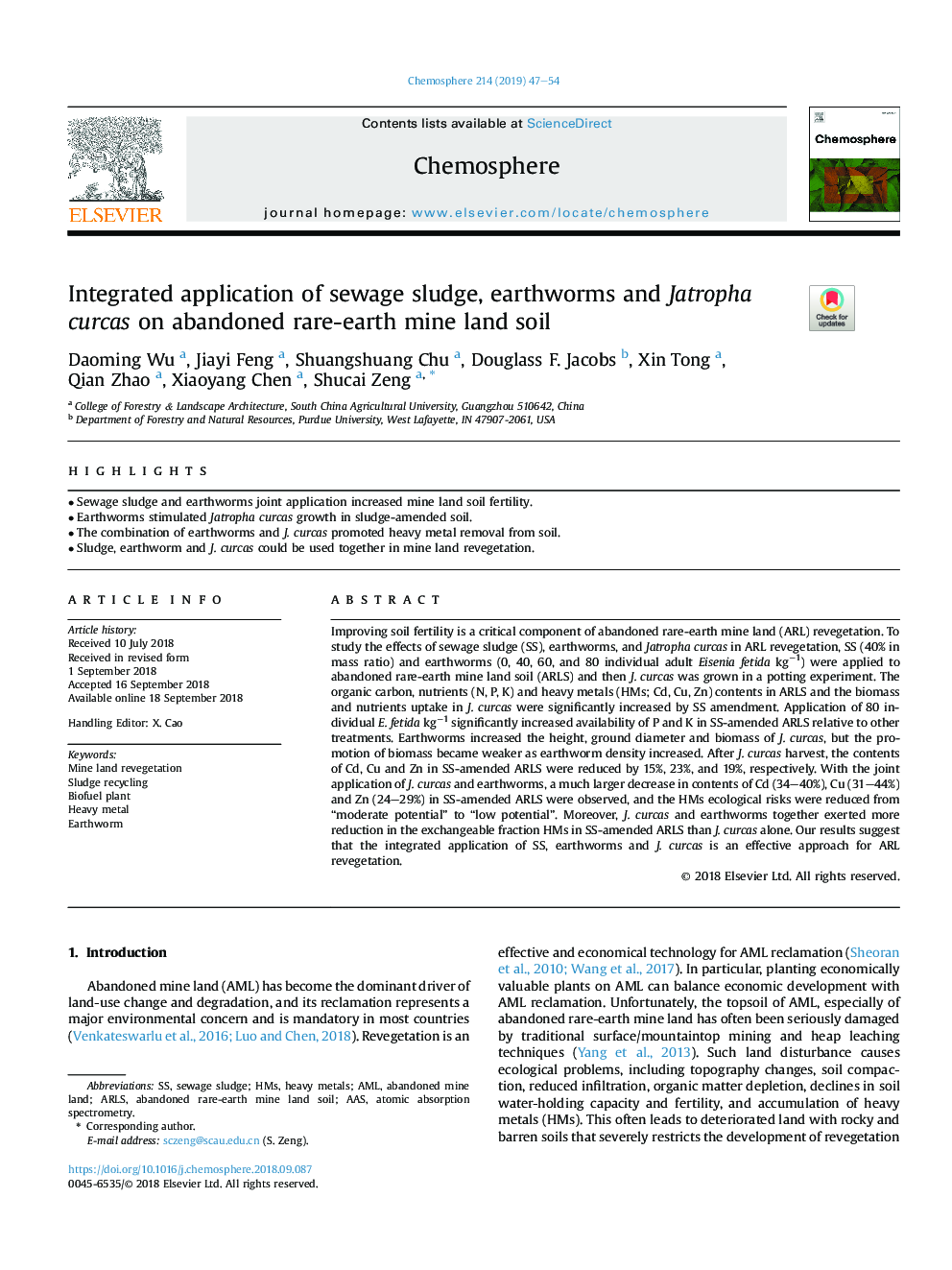| Article ID | Journal | Published Year | Pages | File Type |
|---|---|---|---|---|
| 10223406 | Chemosphere | 2019 | 8 Pages |
Abstract
Improving soil fertility is a critical component of abandoned rare-earth mine land (ARL) revegetation. To study the effects of sewage sludge (SS), earthworms, and Jatropha curcas in ARL revegetation, SS (40% in mass ratio) and earthworms (0, 40, 60, and 80 individual adult Eisenia fetida kgâ1) were applied to abandoned rare-earth mine land soil (ARLS) and then J. curcas was grown in a potting experiment. The organic carbon, nutrients (N, P, K) and heavy metals (HMs; Cd, Cu, Zn) contents in ARLS and the biomass and nutrients uptake in J. curcas were significantly increased by SS amendment. Application of 80 individual E. fetida kgâ1 significantly increased availability of P and K in SS-amended ARLS relative to other treatments. Earthworms increased the height, ground diameter and biomass of J. curcas, but the promotion of biomass became weaker as earthworm density increased. After J. curcas harvest, the contents of Cd, Cu and Zn in SS-amended ARLS were reduced by 15%, 23%, and 19%, respectively. With the joint application of J. curcas and earthworms, a much larger decrease in contents of Cd (34-40%), Cu (31-44%) and Zn (24-29%) in SS-amended ARLS were observed, and the HMs ecological risks were reduced from “moderate potential” to “low potential”. Moreover, J. curcas and earthworms together exerted more reduction in the exchangeable fraction HMs in SS-amended ARLS than J. curcas alone. Our results suggest that the integrated application of SS, earthworms and J. curcas is an effective approach for ARL revegetation.
Keywords
Related Topics
Life Sciences
Environmental Science
Environmental Chemistry
Authors
Daoming Wu, Jiayi Feng, Shuangshuang Chu, Douglass F. Jacobs, Xin Tong, Qian Zhao, Xiaoyang Chen, Shucai Zeng,
